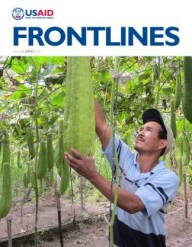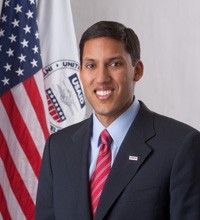It’s hard to believe, but a decade ago, we essentially had no agricultural program in Tanzania, a nation where agriculture employs three-fourths of the labor force and nearly half of all children suffer from undernutrition. Tanzania wasn’t alone. For more than 20 years, agriculture funding in development had been on the decline, leaving the world ill-prepared to cope with the growing challenge of food insecurity.
This changed in 2009 when President Barack Obama launched a global hunger and food security initiative called Feed the Future. Designed to help unlock agricultural growth and transform economies, the presidential initiative works to improve the incomes of smallholder farmers, particularly women, in coordination with partner country-led development plans.
Although the initiative is still in its early days, we are beginning to see significant results.
In Rwanda, we reached 1.6 million children under 5 with nutrition programs that reduced anemia, supported community gardens and treated acute malnutrition. In Bangladesh, we helped 2.8 million smallholder farmers adopt improved technologies last year. One of these technologies—fertilizer deep placement—increases yields, reduces the costs of fertilizer and minimizes runoff into drinking water. As a result, farm sales of rice increased by more than $30 million, and one of the nation’s poorest regions—the Barisal division—experienced its first-ever rice surplus.
Across the world, we’ve helped more than 7 million farmers apply these kinds of new technologies and practices, four times the number we reached the previous year.
We’re also increasingly seeing evidence of the cost-effectiveness of these impacts. Thanks to a recently completed cost-benefit analysis of Feed the Future investments in six focus countries, we know that our projects are delivering a rate of return that averages 22 percent—with a range from 11 percent to 148 percent.
Last year, as we reviewed our progress, we realized that more was still necessary to lift millions from poverty. We need more of the dynamic energy that the private sector can bring to the table. Despite the growth of private-sector investment in developing countries, almost none of it goes to poverty-reducing agricultural development in Africa.
When we reached out to global and local firms, we frequently heard them cite the same barriers to investment: corruption, ineffective policies and a lack of access to donor projects.
To tackle these barriers head on, we helped design the New Alliance for Food Security and Nutrition, a significant new model of partnership that brings private-sector companies and developing countries together to expand investment opportunities in African agriculture. So far, more than 70 global and local companies have committed more than $3.75 billion to expand seed production and distribution, establish small-scale irrigation systems, and source food for global supply chains.
Tanzania removed its export ban on staple commodities, Mozambique eliminated permit requirements for inter-district trade, and Ethiopia no longer imposes export quotas on commercial farm outputs and processed goods.
At the same time, Yara International has started construction on a fertilizer terminal at Tanzania’s largest port, and a local company called Tanseed is developing a seed package designed specifically for smallholder farmers. In Ethiopia, DuPont is expanding seed distribution to reach 35,000 smallholder maize farmers and increase productivity by 50 percent.
We’re encouraged by early results, but we know we face real challenges ahead, including helping our partner governments follow through on reforms, and deepening our engagement with civil society. But in a world where private investment vastly outpaces official assistance, nations will only achieve development in partnership with a vibrant and transparent private sector. Through the New Alliance, we can empower government and business leaders to chart this new path in development.










Comment
Make a general inquiry or suggest an improvement.